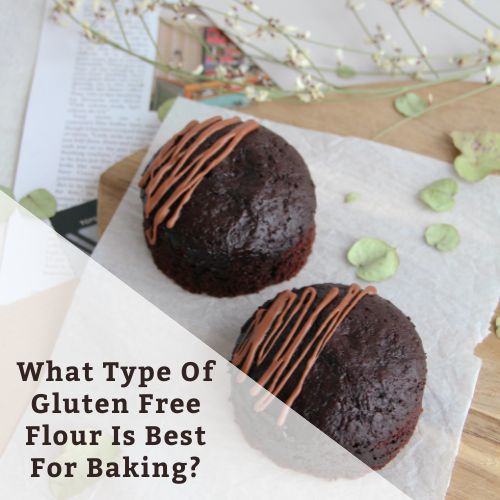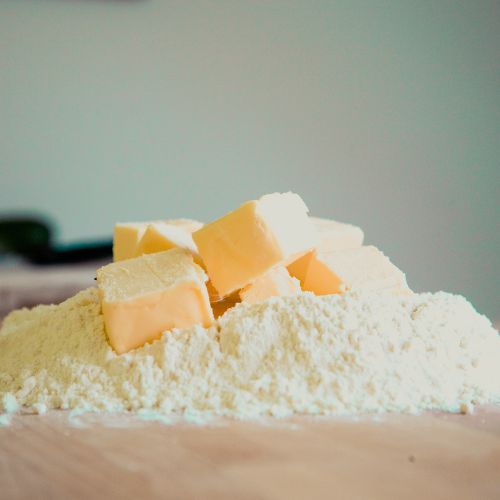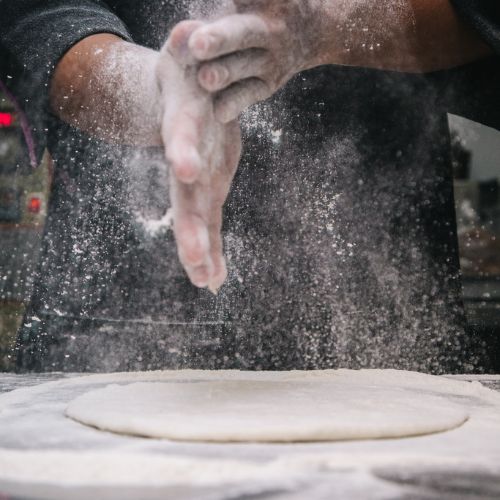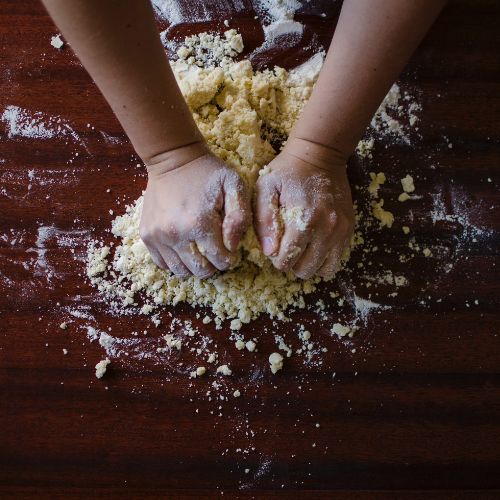What Type Of Gluten Free Flour Is Best For Baking?
Baking is not only a delightful culinary art form but also a therapeutic activity that brings joy to many. Baking can be challenging for individuals with gluten sensitivities or celiac disease. However, gluten-free flour has revolutionized the baking world, providing delicious alternatives and making it possible for everyone to enjoy the pleasures of freshly baked goods.
Gluten, a protein found in wheat, barley, and rye, provides elasticity and structure to baked goods. Unfortunately, for those with gluten sensitivities or celiac disease, consuming gluten can lead to digestive discomfort and long-term health issues. Gluten-free flours, on the other hand, are made from grains and starches that do not contain gluten, such as rice, corn, potato, almond, and tapioca.
The importance of gluten-free flours in baking lies in their ability to mimic the texture and flavor of traditional wheat-based products. While baking with gluten-free flours can be a bit trickier, with proper techniques and ingredient combinations, it is possible to create delicious and satisfying treats. These flours can be used individually or in combination to achieve the desired results.
Gluten-free flours often require the addition of binders, such as xanthan gum or guar gum, to provide the necessary structure and prevent crumbling. They may also require additional moisture or fat to compensate for the lack of gluten. Many gluten-free recipes also call for the use of eggs or egg substitutes, as eggs act as natural binders and provide moisture to the baked goods.
The availability of gluten-free flours has expanded significantly in recent years, with a wide range of options now readily accessible in grocery stores. This allows bakers to experiment and explore various flavors and textures in their creations. From light and fluffy cakes to chewy cookies and flaky pie crusts, gluten-free flours have made it possible to enjoy a diverse array of baked goods without sacrificing taste or quality.
Moreover, the importance of gluten-free flours extends beyond the individuals with gluten sensitivities or celiac disease. Many people choose to incorporate gluten-free options into their diet as a healthier alternative or as part of a well-rounded eating plan. This increased demand for gluten-free products has led to continuous innovation and improvement in the quality and variety of gluten-free flours available.
In conclusion, gluten-free flours have revolutionized the baking world by providing alternatives catering to individuals with gluten sensitivities or celiac disease. Their importance lies in their ability to recreate the texture and flavor of traditional baked goods, allowing everyone to enjoy the pleasures of freshly baked treats. Whether you have dietary restrictions or simply enjoy exploring new flavors, gluten-free flours have become an essential ingredient for bakers around the world, opening up a world of possibilities in the realm of gluten-free baking.
Is Gluten-Free Flour Good For Baking?
Gluten-free flour can be a good option for baking, especially for individuals with gluten sensitivities or celiac disease who need to avoid gluten. However, it’s important to understand that gluten-free flours behave differently than traditional wheat flour due to the absence of gluten, a protein that provides structure and elasticity in baked goods.
The performance of gluten-free flour in baking depends on several factors, including the specific type of flour used, the recipe, and the techniques employed. Here are some considerations:
- Texture: Gluten-free flours can yield different textures in baked goods. Some gluten-free flours, such as almond flour or rice flour, may result in a more dense and moist texture. On the other hand, combining multiple gluten-free flours or using a gluten-free flour blend can help achieve a lighter and more tender crumb.
- Binding: Gluten-free flours often require additional binding agents such as xanthan gum or guar gum to compensate for the lack of gluten. These binders help provide structure and prevent the baked goods from crumbling.
- Flavor: Gluten-free flours can impart their own unique flavors to baked goods. Almond flour adds a nutty taste, coconut flour adds a subtle coconut flavor, and so on. The flavor profile of the gluten-free flour should be considered when selecting or substituting it in a recipe.
- Recipe Modifications: When using gluten-free flour, it may be necessary to make certain modifications to the recipe. For instance, increasing the moisture content, adding more eggs, or adjusting the leavening agents can help achieve the desired texture and rise.
- Experimentation: Baking with gluten-free flour often involves some trial and error to find the right combination of ingredients and techniques for the desired outcome. It may take some practice and experimentation to achieve optimal results with gluten-free baking.
It’s worth noting that there are now numerous gluten-free flour blends available in the market that are specifically formulated to mimic the properties of wheat flour. These blends can simplify the process of gluten-free baking and improve the texture and taste of the final product.
In conclusion, while gluten-free flours may require some adjustments and experimentation, they can be a good option for baking when used correctly. They allow individuals with gluten sensitivities or celiac disease to enjoy a variety of baked goods, and with the right techniques and ingredients, delicious gluten-free treats can be created.
The 25 Best Gluten Free Flours For Baking & Breadmaking

There are numerous gluten-free flours available that can be used for baking and breadmaking, each with its own unique characteristics. Here is a list of 26 popular gluten-free flours that are commonly used in gluten-free baking and breadmaking:
- Almond Flour
- Amaranth Flour
- Arrowroot Flour
- Brown Rice Flour
- Buckwheat Flour
- Chickpea Flour (Besan)
- Coconut Flour
- Corn Flour
- Cornmeal
- Millet Flour
- Oat Flour (Certified Gluten-Free)
- Potato Flour
- Quinoa Flour
- Sorghum Flour
- Sweet Potato Flour
- Tapioca Flour/Starch
- Teff Flour
- White Rice Flour
- White Rice Starch
- Green Banana Flour
- Fava Bean Flour
- Garbanzo Bean Flour
- Lentil Flour
- Tigernut Flour
- Cassava Flour
What Type Of Gluten Free Flour Is Best For Baking?

When it comes to gluten-free baking, there is no one-size-fits-all answer to the question of which type of flour is best. The choice of gluten-free flour depends on several factors, including the desired outcome, flavor profile, and the specific recipe being used. However, there are a few popular gluten-free flours that are commonly used in baking.
- Rice Flour: Rice flour is a versatile gluten-free option that is widely available. It can be used in a variety of baked goods and has a neutral flavor. However, it tends to produce a drier texture, so it is often combined with other flours or ingredients to enhance moisture and tenderness.
- Almond Flour: Almond flour, made from ground blanched almonds, adds a rich, nutty flavor to baked goods. It is often used in recipes for cakes, cookies, and muffins. Almond flour adds moisture and a tender crumb to baked goods but may not work well as a standalone flour due to its higher fat content.
- Coconut Flour: Coconut flour, made from dried coconut meat, is high in fiber and adds a subtle coconut flavor to baked goods. It absorbs a significant amount of liquid, so it should be used in combination with other flours or with added moisture. It is commonly used in recipes for pancakes, quick breads, and muffins.
- Buckwheat Flour: Despite its name, buckwheat is not a wheat grain and is naturally gluten-free. Buckwheat flour has a slightly nutty flavor and is commonly used in pancakes, crepes, and muffins. It provides a hearty texture and works well in combination with other gluten-free flours.
- Sorghum Flour: Sorghum flour, derived from a grain, has a mild, slightly sweet flavor. It is often used in combination with other gluten-free flours and works well in recipes for bread, muffins, and cookies. Sorghum flour adds tenderness and moisture to baked goods.
It’s important to note that gluten-free flours often work best when combined to mimic the properties of gluten. A common approach is to use a gluten-free flour blend, which is a pre-mixed combination of various gluten-free flours and starches. These blends are formulated to provide a balanced texture and flavor profile for a wide range of baked goods.
Ultimately, the best gluten-free flour for baking will depend on personal preference, dietary restrictions, and the specific recipe being used. It may require some experimentation and adjustments to find the perfect combination that yields the desired results.
Which Gluten-Free Flours Rise The Best?
Gluten-free flours do not have the same ability to provide structure and elasticity as wheat flour, which contains gluten. As a result, achieving a significant rise in baked goods can be more challenging with gluten-free flour. However, some gluten-free flour and ingredients can help improve the rise in gluten-free baking. Here are a few that are known to have better rising capabilities:
- Tapioca Flour/Starch: Tapioca flour or starch is a common ingredient in gluten-free flour blends and is known for its ability to provide lightness and improve the rise in baked goods. It helps create a more tender and airy texture.
- Potato Starch: Potato starch is another starch commonly used in gluten-free baking. It helps add moisture and contributes to a lighter texture. When combined with other gluten-free flours, it can improve the rise of baked goods.
- Xanthan Gum: Xanthan gum is a popular binder and stabilizer used in gluten-free baking. It helps mimic the structure and elasticity provided by gluten. Xanthan gum can enhance the rise of gluten-free bread, muffins, and other baked goods.
- Guar Gum: Similar to xanthan gum, guar gum is a binding agent that can help improve the texture and rise in gluten-free baking. It is often used in combination with other gluten-free flours to enhance the overall quality of the baked goods.
- Egg Whites: Adding whipped egg whites to gluten-free batters or dough can help incorporate air and create a better rise. The proteins in egg whites provide some structural support and can contribute to a lighter and fluffier texture.
Notably, the rise achieved with gluten-free flour may not be as pronounced as with traditional wheat flour. The absence of gluten can limit the elasticity and structure, resulting in denser baked goods. However, using a combination of the above-mentioned ingredients and techniques can improve the rise and achieve satisfying results in gluten-free baking.
Additionally, proper leavening agents such as baking powder or baking soda are crucial for achieving a good rise in gluten-free baked goods. They work in conjunction with the gluten-free flours and other ingredients to create the desired lift and texture.
Experimentation and adjusting recipes based on the specific combination of gluten-free flours and rising agents will help you achieve the best possible rise in your gluten-free baked goods.
Best Type Of Gluten Free Flour For Baking

The best type of gluten-free flour for baking depends on the specific recipe and desired outcome. However, there are a few gluten-free flours that are commonly regarded as versatile and reliable options for various baked goods:
- Gluten-Free All-Purpose Flour Blends: These blends are specifically formulated to mimic the properties of all-purpose wheat flour. They typically consist of a combination of different gluten-free flours, such as rice flour, tapioca flour, and potato starch. These blends are convenient to use as they can be substituted one-to-one for regular flour in most recipes, making them suitable for a wide range of baked goods, including cakes, cookies, and bread.
- Almond Flour: Made from finely ground blanched almonds, almond flour is a popular choice for gluten-free baking. It provides a moist and tender texture and imparts a pleasant nutty flavor. Almond flour works well in recipes for cookies, cakes, and muffins, especially those with a denser texture.
- Coconut Flour: Derived from dried and ground coconut meat, coconut flour is high in fiber and adds a unique flavor to baked goods. It absorbs a significant amount of moisture, so it is often used in combination with other flours or with additional eggs or liquid. Coconut flour is commonly used in recipes for pancakes, muffins, and quick breads.
- Buckwheat Flour: Despite its name, buckwheat is a gluten-free grain. Buckwheat flour has a slightly nutty and earthy flavor. It adds a pleasant taste and texture to recipes for pancakes, crepes, and waffles. Buckwheat flour is also commonly used in gluten-free bread and muffin recipes.
- Oat Flour: Oat flour made from ground oats is naturally gluten-free (but make sure it is certified gluten-free to avoid cross-contamination). It has a mild flavor and works well in recipes for cookies, muffins, and quick breads. Oat flour can also be used as a partial replacement for wheat flour in some recipes.
It’s important to note that gluten-free flours often work best when combined in specific ratios to achieve optimal texture and taste. Additionally, some recipes may require the use of binders, such as xanthan gum or guar gum, to help mimic the elasticity and structure provided by gluten.
Experimenting with different gluten-free flours and blends is key to finding the best option for your specific baking needs. Personal taste preferences, dietary restrictions, and the desired outcome of the recipe will all play a role in determining the ideal gluten-free flour for your baking endeavors.
What To Avoid Ffor Gluten Free Baking?
When engaging in gluten-free baking, it is important to be mindful of certain ingredients and factors to ensure that the final product is truly gluten-free. Here are some key considerations and items to avoid:
- Wheat Flour and Other Gluten-Containing Grains: Avoid using wheat flour or any other flours derived from gluten-containing grains such as barley, rye, and triticale. These flours are rich in gluten and are the primary culprits for triggering reactions in individuals with gluten sensitivities or celiac disease.
- Cross-Contamination: Avoid cross-contamination by ensuring that all the ingredients, utensils, and equipment used for gluten-free baking are thoroughly cleaned and free from any traces of gluten. Even small amounts of gluten can cause adverse reactions in sensitive individuals.
- Pre-Mixed Ingredients with Gluten: Some pre-mixed ingredients like baking mixes, spice blends, or processed food products may contain hidden sources of gluten. Always read labels carefully and look for certified gluten-free products.
- Regular Oats: While oats themselves are gluten-free, they are often contaminated with gluten during processing. To be safe, use oats that are specifically labeled as “certified gluten-free.”
- Non-Gluten-Free Additives: Be cautious of additives and fillers that may contain gluten, such as certain food colorings, flavorings, emulsifiers, or stabilizers. Always check the ingredient list or opt for certified gluten-free versions.
- Hydrolyzed Wheat Protein and Malt Extract: These ingredients, commonly found in some processed foods or flavorings, are derived from gluten-containing grains and should be avoided.
- Bulk Bins: Avoid purchasing gluten-free flours or other ingredients from bulk bins, as cross-contamination is more likely to occur in these settings.
- Insufficient Binders: Gluten-free flours lack the binding properties of gluten. Consider using binders like xanthan gum or guar gum in your recipes to compensate for this. These help improve the texture and structure of baked goods.
By being mindful of these factors and diligently checking labels for potential sources of gluten, you can ensure that your gluten-free baking remains safe and suitable for individuals with gluten sensitivities or celiac disease.
Final Thoughts: “What Type Of Gluten Free Flour Is Best For Baking?”

In conclusion, when it comes to determining the best type of gluten-free flour for baking, it largely depends on personal preference, dietary restrictions, and the desired outcome of the baked goods. There is no one-size-fits-all answer as each gluten-free flour has its own unique properties and flavors.
Experimentation is key in finding the right gluten-free flour or flour blend that works well for your specific needs. It may be beneficial to try a combination of gluten-free flours to achieve the desired texture, taste, and nutritional profile. Gluten-free flour blends available in the market can also simplify the process by providing a balanced combination of flours and starches.
Consider the specific characteristics of the flour you choose, such as its moisture absorption, binding capabilities, and flavor profile. Some flours, like almond flour or coconut flour, offer nutritional benefits such as higher protein and fiber content, while others like tapioca flour or potato starch contribute to texture and lightness.
Additionally, incorporating other ingredients like xanthan gum or eggs can help improve the texture and structure of gluten-free baked goods.
Ultimately, the best type of gluten-free flour for baking is the one that meets your dietary needs, provides the desired taste and texture, and suits the recipe you are working with. With some experimentation and creativity, you can achieve delicious and satisfying results in your gluten-free baking endeavors.
READ MORE
Can I Substitute Butter For Oil In Brownie Mix
How To Fix Too Much Oil In Brownies?
Types Of Flours For Baking (Different Types of Baking Flour)